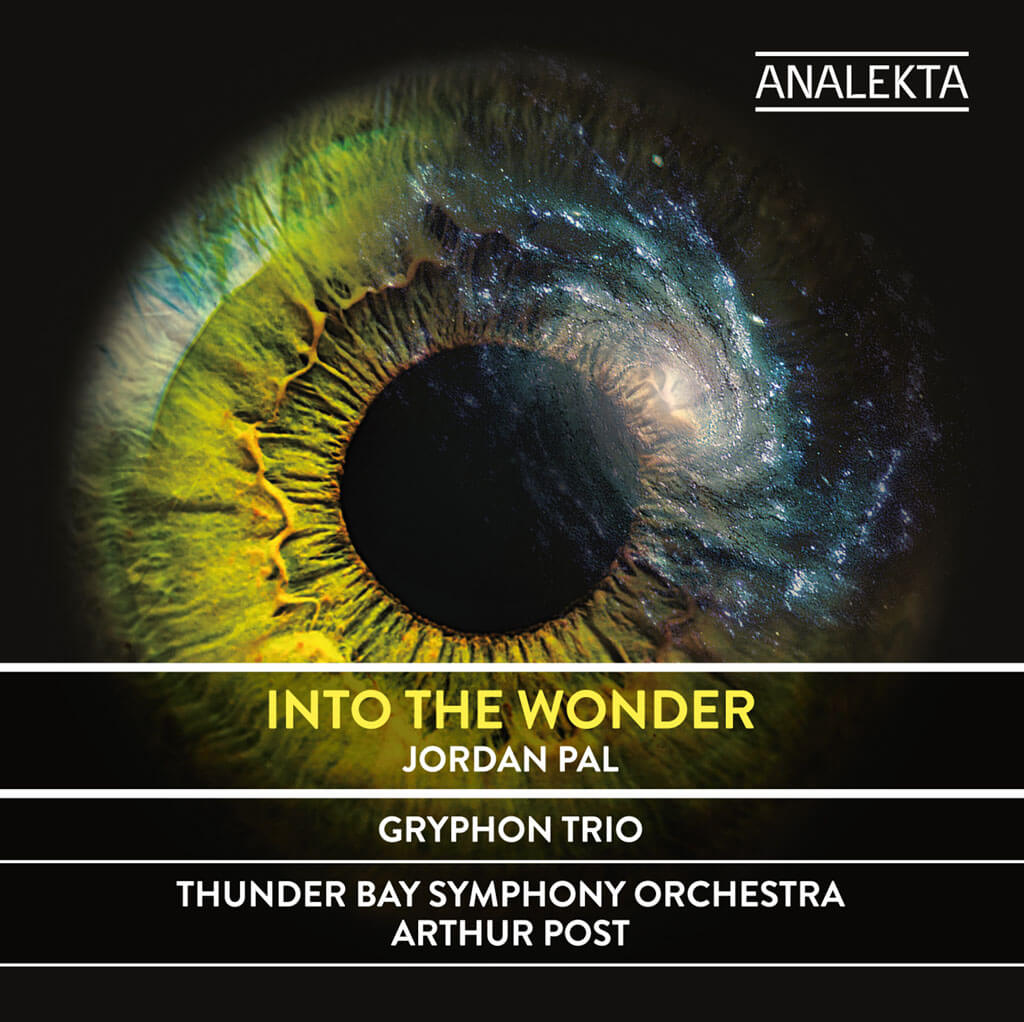One of Canada’s most interesting young composers, Jordan Pal’s first record is an expansive personal awakening.

Those of us who live in Toronto, with its remarkable range of classical music offerings, often forget that beyond the borders of our fair city there is a lot going on, about which we know far too little, this new CD from the enterprising Quebec label Analekta being a case in point. I wonder how many Toronto music-lovers were even aware that Thunder Bay had a professional orchestra. Here it is, with world premiere recordings of two major works it commisioned from one of Canada’s most interesting young composers.
Jordan Pal writes colourful, tuneful and invariably entertaining tonal music that is immediately accessible to a general audience. Pal studied with composer Gary Kulesha, earned his doctorate from the University of Toronto, and is currently the Royal Bank of Canada (RBC) Affiliate Composer with the Toronto Symphony (TSO), which recently took his composition Iris on tour to Israel.
It is not easy for a composer to write about his own music; after all, had he wanted to express himself in words, he would have done so. Instead, he said what he wanted to say in music. Such is the case here. Pal’s notes about the two works on this recording tend toward the hyperbolically metaphorical and opaque. About Starling, he writes that his hope is “to inspire a greater appreciation of our environment” and that “music is possibly the only human endeavor that has the potential to match nature’s evanescent splendor.” Although these are grand themes and Pal is certainly entitled to promote them, such comments really shed very little light on his music. That said, in giving the title, “Awakening of happy feelings on arriving in the country,” to the first movement of his 6th symphony, Beethoven didn’t tell us much about his music either. Ultimately, music is music and mostly speaks for itself.
Listening to Starling: Triple Concerto for Violin, Cello, Piano and Orchestra, Beethoven comes to mind again, for it was Beethoven who wrote the only piece for this combination of instruments that has managed to stay in the repertoire.
Writing his Triple Concerto 212 years after Beethoven, Jordan Pal has given himself a formidable challenge. Does he treat the three instruments as a solo group or as three distinct soloists? Or does he try to do both? In this case, he was writing for the Gryphon Trio, so one assumes that the three players should be thought of as a group rather than as individual soloists. For the most part, it seems that he has adopted this principle while giving each of the members of the Trio an opportunity to shine now and again, and shine they do both separately and together.
Starling is a thoroughly engaging piece with a wide range of textures and colours. Just as one begins to tire of the amorphous and somewhat static impressionism of the piece, Pal gives us a perpetual motion finale — aptly titled “Electric & Wild” — that provides exactly the change of pace that is needed. I suspect that this rip-roaring finale must have brought Thunder Bay audience members to their feet at the first performances last year.
Into the Wonder is described by the composer as a symphony that “celebrates all that is beautiful.” To judge by Mr. Pal’s notes, this work is even more ambitious than Starling. The piece evokes “birth and death, creation and destruction, universal interconnectedness and the rapture of love.” Despite this hyperbolic language, the piece has a purely musical unity. Pal helpfully points out that the three movements are bound together by one musical idea, which he has masterfully developed. As was the case with Starling, Into the Wonder ends with an uptempo, tarantella-like last movement that features infectious rhythms and brilliant orchestration. In fact, the orchestration is so clever and effective that one would never guess that it is executed by only 40 players.
The musicians of the Thunder Bay Symphony perform both pieces very well under the very capable direction of American-born conductor Arthur Post, the orchestra’s music director from 2010 until earlier this year.
Jordan Pal: Into the Wonder is available at amazon.ca and iTunes.
#LUDWIGVAN
Want more updates on Toronto-centric classical music news and reviews before anyone else finds out? Follow us on Facebook or Twitter for all the latest.
![]()
- SCRUTINY | TSO Lets Berlioz Do The Talking In Season Opener - September 21, 2018
- RECORD KEEPING | Even Yannick Nézet-Séguin Can’t Make Us Love Mozart’s La Clemenza di Tito - September 6, 2018
- RECORD KEEPING | Giovanna d’Arco With Anna Netrebko Explains Why The Best Operas Survive - August 30, 2018



